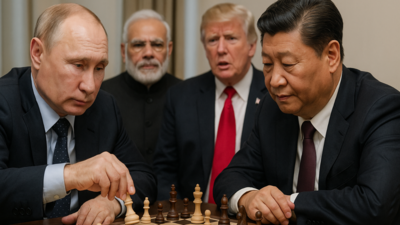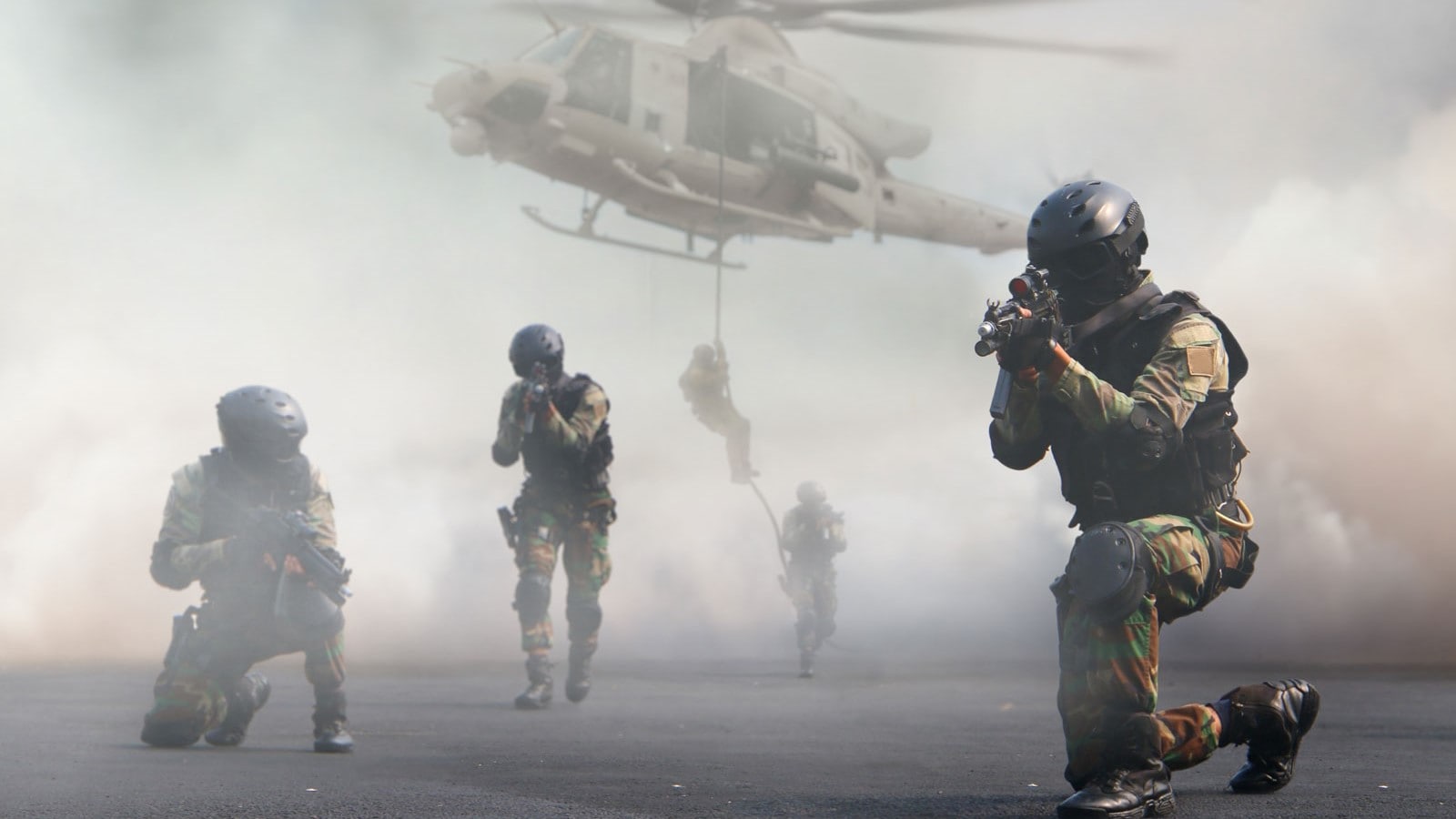ARTICLE AD BOX

As US President Donald Trump publicly lashes out at Vladimir Putin for dragging out the Ukraine war, Moscow is quietly retooling its Asia strategy putting India front and centre in hopes of countering growing Western influence.
While Trump’s frustration with Putin mounts, the Kremlin has ramped up arms deals and diplomatic outreach to New Delhi, aiming to revive the once-promising Russia-India-China (RIC) troika as a foil to the Quad.Trump’s irritation with Putin has grown as the Kremlin delays a ceasefire. While Kyiv reportedly accepted Trump's earlier 30-day truce proposal, Russia refused, insisting on terms that would force Ukraine to surrender territory not even under Russian control.
Trump has since offered to host peace talks, but Moscow’s demands, including US recognition of Crimea, have drawn accusations from experts like former ambassador Michael McFaul, who called them “poison pills” meant to derail diplomacy.This has forced Putin to rekindle old alliances as a means to ‘fight, fight, fight’ against the US influence. From arms deals to trilateral summits, Russia is intensifying efforts to woo New Delhi, hoping to revive the Russia-India-China (RIC) dialogue as a counterweight to Western influence.
'India-Russia defence deals rubbed US the wrong way'
The situation became more tricky for New Delhi when US secretary of commerce Howard Lutnick delivered a forthright assessment of recent tensions in the India-US relationship, pointing to certain Indian policies that “rubbed the US the wrong way.” These include New Delhi’s continued purchase of military equipment from Russia and its participation in the BRICS grouping, which Lutnick characterised as an attempt to “not support the dollar and dollar hegemony.
”
That's a way to kind of get under the skin of America...That's not really the way to make friends and influence people in America
US Commerce Secretary Howard Lutnick
“That’s not really the way to make friends and influence people in America,” Lutnick said, noting that President Trump “calls that out directly,” and the Indian government is now “addressing it specifically.”Despite such differences, Lutnick struck an optimistic tone, calling India’s economy “extraordinary” and praising its “amazing” human capital and growth. He said both countries are working towards a trade agreement and that “you should expect a deal...in
the not too distant future.”
Lavrov’s India pitch
Russian foreign minister Sergey Lavrov, speaking in Perm on Friday, revealed new efforts to woo India. He claimed Moscow was told India joined the Quad alliance, which includes the US, Australia and Japan, purely for economic cooperation. But Lavrov warned that the alliance is being militarised behind the scenes.“In practice, other countries from the Quad are already trying, already insisting on organising naval and other military exercises,” Lavrov said.
“And I’m sure that our Indian friends can see this provocation clearly,” he said.Also read: 'US, other Quad countries trying to force India into military alliance rather than just trade,' claims RussiaLavrov’s remarks came a day before US Defence Secretary Pete Hegseth’s announcement that the US is deepening its military relationship with India. Hegseth cited joint exercises like Tiger Triumph and Towson Sabre as evidence of growing strategic coordination in the Indo-Pacific. He also pointed to the Indo-Pacific Logistics Network and the PIPER initiative as efforts to integrate the region’s defence infrastructure.
“Rookies talk strategy, pros talk logistics,” Hegseth said, signalling the US goal of building a sustained and interconnected defence presence in Asia. He emphasised that Trump’s foreign policy was “grounded in common sense and national interest” and stressed that a resilient alliance of like-minded democracies remains America’s greatest strength against Chinese ambitions.But for Russia, these moves are part of what Lavrov describes as a Western ploy to “divide and conquer,” a phrase he says President Putin himself recently used.
Lavrov warned that the rebranding of the Asia-Pacific into the “Indo-Pacific” was designed to isolate China and undermine ASEAN.
Rekindling older alliances
Perhaps the most significant signal from Lavrov was Russia’s renewed push for the revival of the Russia-India-China (RIC) trilateral dialogue. The forum, originally proposed by former Russian Prime Minister Yevgeny Primakov, has met over 20 times and served as a platform for cooperation in trade, finance, and foreign policy.“Now that… an understanding has been reached between India and China on how to calm the situation on the border, it seems to me that the time has come to revive this RIC troika,” Lavrov said. He framed the grouping as a valuable mechanism that could balance out the influence of Western-led coalitions like the Quad.
India’s strategic tightrope
However, India’s position remains complex. For years, India has enjoyed a privileged status as one of Russia’s largest arms importers.
Moscow provided India with cutting-edge weaponry, sometimes even before it was deployed in the Russian military itself.From India’s strategic viewpoint, the RIC format carries other risks. Beijing continues to occupy a key position in South Asia’s strategic balance, primarily through its deepening alliance with Islamabad. India remains concerned that any trilateral cooperation would be undermined unless China reconsiders its longstanding military and nuclear support for Pakistan.Moreover, the RIC format’s perceived anti-American leanings are another sticking point. With Indo-US relations having deepened under both Prime Minister Narendra Modi and President Trump, especially on defence and technology cooperation, New Delhi may find it increasingly difficult to align with Russia and China in ways that could appear contrary to its current trajectory.
'Wishful thinking by Russia'
Professor Rajan Kumar, from the School of International Studies at Jawaharlal Nehru University while speaking with the TimesofIndia.com, said that Russia’s push for a revived RIC format may be “wishful thinking by Russia, and it flies away in context of the real world and the current geo-political landscape.”He agreed, however, with Foreign Minister Lavrov’s warning that the West seeks to “divide and conquer” the India–China relationship.On whether the RIC would serve as a platform for direct mediation with China, Professor Kumar noted that “though India and China are members of several international organisations, like the BRICS and SCO, a direct mediation with China is not possible.
Particularly after the Ladakh incident in 2020, after which New Delhi’s trust with Beijing has disappeared.”
'India maintains strategic autonomy'
Asked whether India must align with either the US or Russia, he warned that “given the current policies of the Trump administration, India cannot depend on the United States. As a consequence of the US president’s policy the world has moved towards protectionism, and in the context of defence production this has ruled out the possibility of joint production of weapons.” He further noted India’s longstanding tradition of strategic autonomy, adding, “India has always maintained the policy of strategic autonomy, and it doesn’t have the policy of involving other countries in its policy of China, and India sees China as a rival country. I believe in the coming time the tensions between New Delhi and Beijing are likely to escalate.”On whether Russia taking military equipment from China during its war with Ukraine would have impact on India’s defence dealings with Russia, Professor Kumar observed: “Yes, we do have a certain degree of dependence on Russian defence equipment, as was recently seen in the India-Pakistan war, with the successful use of S-400 on the defensive front and the BrahMos missile on the offensive.
But yes, we are also trying to diversify our defence, with deals from Israel and France.
”
India's balancing act
Professor Rajan welcomed India’s efforts to boost indigenous defence production, noting that “one good thing is that India has also ramped up its own defence production and is moving towards becoming a major defence exporter; however, when compared to other countries its defence dealings are still minuscule.”Speaking on how India’s close ties with Russia can be leveraged to question China’s support for Pakistan, he explained that “India has repeatedly voiced concerns about both China and Pakistan, especially regarding Islamabad’s support for terrorist groups.
Yet, India cannot dictate Russian foreign policy, as Moscow is grappling with its own geopolitical constraints. Since the full-scale invasion of Ukraine in February 2022, Russia has faced isolation and sanctions from the West, compelling it to deepen ties elsewhere.
India, while strengthening ties with Western democracies, notably refrained from imposing sanctions on Russia and has abstained from UN resolutions condemning Moscow.
This stance reflects India’s effort to balance relations rather than fully aligning with Western positions. Concurrently, India participates in the Quadrilateral Security Dialogue (Quad) alongside the US, Australia, and Japan, a grouping often viewed as a strategic counterweight to China’s influence.”
What's the road ahead?
India is poised to maintain its careful balancing act. In practice, New Delhi will likely deepen its defence ties with the US expanding logistics cooperation and joint exercises while continuing to source critical systems from Russia wherever gaps remain in its domestic industry. At the same time, India’s focus on ramping up indigenous production and forging new partnerships with France and Israel suggests that Moscow’s overtures, though acknowledged, will be weighed against broader economic and strategic interests. Whatever shape RIC might take, New Delhi’s core priority will remain safeguarding its own strategic autonomy managing great-power competition without becoming dependent on any single capital.



.png)
.png)
.png)
















 4 hours ago
5
4 hours ago
5









 English (US) ·
English (US) ·